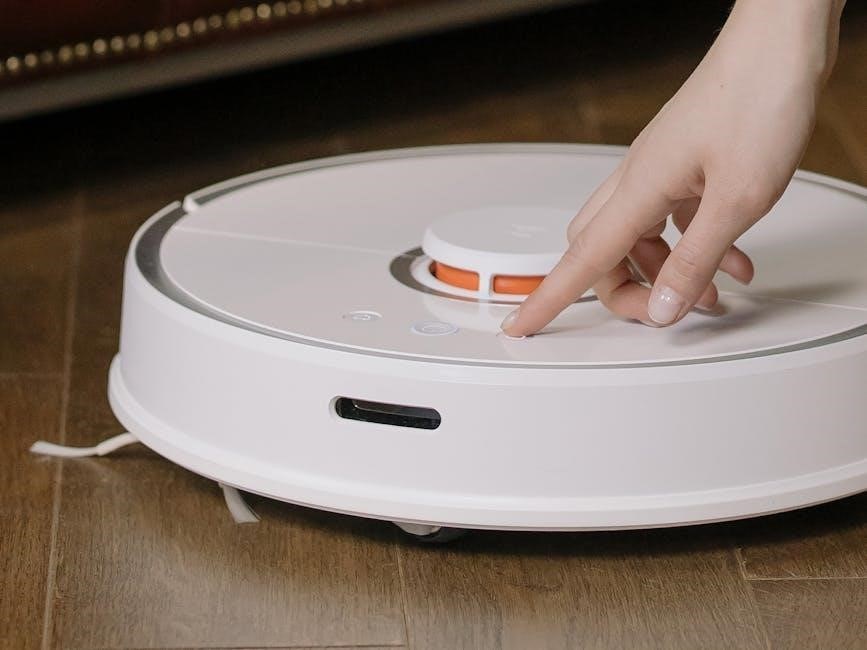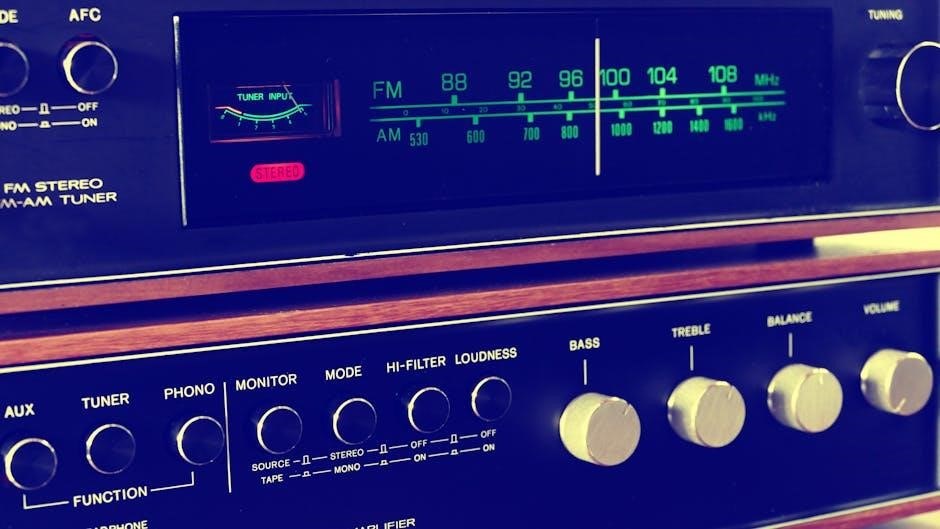Intermatic Timer Switch Instructions: A Comprehensive Guide
Welcome! This guide provides comprehensive instructions for Intermatic timer switches. It covers various models, installation, programming, and troubleshooting. Whether digital or mechanical, learn to automate your lights and appliances effectively with Intermatic timers.
Understanding Intermatic Timer Switches
Intermatic timer switches are automated devices designed to control electrical circuits based on a preset schedule. They replace standard light switches, offering convenience and energy savings by automating lights, fans, and other appliances. These timers can be programmed for daily or weekly cycles, providing flexibility for various needs.
The core function of an Intermatic timer switch is to switch connected loads on and off at programmed times. This automation helps reduce energy consumption by ensuring devices are only active when needed. Some models even feature an astronomic clock, which adjusts on/off times based on sunrise and sunset, eliminating manual adjustments.
Understanding the basic operation and features of Intermatic timer switches is essential for proper installation and programming. This knowledge enables users to maximize the benefits of automated lighting and appliance control, contributing to energy efficiency and convenience in both residential and commercial settings.
They can also operate in manual mode, allowing you to override the timer settings.
Types of Intermatic Timer Switches
Intermatic offers a diverse range of timer switches designed to meet various needs, primarily categorized into digital and mechanical types. Digital timer switches, like the ST01 and EJ600 series, feature electronic programming with precise control and often include advanced features such as astronomic timing.
Mechanical timer switches, such as the ET100 and ET270 models, utilize a clockwork mechanism with pins or dials to set on/off times. These are generally simpler to operate but offer less programming flexibility compared to digital models. They are robust and reliable for basic timing needs.
Beyond these primary categories, Intermatic also provides specialized timers like in-wall timers, plug-in timers, and heavy-duty timers for commercial applications. Each type caters to specific installation requirements and load capacities, ensuring compatibility with different lighting and appliance systems. Choosing the right type depends on the desired level of control, ease of use, and application.

Some timers are designed for indoor use, while others are suitable for outdoor applications.
Digital Timer Switches (e.g., ST01, EJ600)
Digital timer switches, such as the Intermatic ST01 and EJ600 series, represent advanced solutions for automated lighting and appliance control. These timers feature electronic displays and programmable settings, offering greater precision and flexibility compared to their mechanical counterparts.

The ST01 model is known for its self-adjusting capabilities, adapting to daylight saving time automatically. It is a 7-day heavy-duty programmable timer suitable for both residential and commercial use. The EJ600 series incorporates an astronomic feature, which calculates sunrise and sunset times based on your location, enabling dusk-to-dawn operation without manual adjustments.
These digital timers often include features like multiple on/off settings per day, manual override options, and battery backup to maintain settings during power outages. Installation typically involves replacing an existing wall switch, and programming is done through user-friendly interfaces. Digital timers provide enhanced convenience and energy savings through precise and customizable scheduling.
They are ideal for users who require sophisticated control and automation of their lighting or appliances.
Mechanical Timer Switches (e.g., ET100, ET270)
Mechanical timer switches like the Intermatic ET100 and ET270 provide a reliable and straightforward method for automating electrical devices. These timers operate using a clockwork mechanism with pins or trippers that can be set to activate or deactivate the switch at specific times.
The ET100 series is designed for daily scheduling, allowing users to set on/off times for a 24-hour period. The ET270 series offers weekly scheduling capabilities, enabling different settings for each day of the week. Both models are suitable for controlling lights, pumps, and other electrical loads based on a preset schedule.
Installation typically involves wiring the timer in place of a standard switch, and setting the desired on/off times by adjusting the position of the pins or trippers on the timer dial. While they lack the advanced features of digital timers, mechanical timers are known for their simplicity and durability. They do not require batteries and continue to operate even during power outages, maintaining the set schedule. These timers are a practical choice for basic automation needs.
However, be sure to only rotate the dial clockwise.
Installation Instructions
Before commencing the installation of your Intermatic timer switch, ensure that you have gathered all necessary tools, including a flat-blade screwdriver, wire strippers, and a voltage tester. Prior to any wiring, it is imperative to disconnect power at the circuit breaker or disconnect switch to guarantee safety during the installation process.
Begin by removing the existing switch from the wall. Identify the wires connected to the old switch. Typically, you will find a hot wire, a load wire, and potentially a neutral wire. Carefully disconnect the wires, using the wire strippers if necessary. Connect the corresponding wires to the Intermatic timer switch, following the wiring diagram provided in the product manual.
Secure the timer switch into the wall box and attach the Decora style wall plate. Restore power at the circuit breaker and test the timer switch to ensure it functions correctly. If you are replacing a 3-way switch, ensure you follow the specific wiring configuration for 3-way switches, which may involve connecting the common wire appropriately.
Always consult the Intermatic timer switch manual for detailed instructions and safety precautions specific to your model.
Safety Precautions Before Installation
Prioritizing safety is paramount before initiating any electrical work, especially when installing an Intermatic timer switch. Begin by disconnecting the power supply to the circuit at the breaker box or fuse box. This crucial step eliminates the risk of electric shock during the installation process. Always verify the power is off using a reliable voltage tester before proceeding.
Carefully read and understand the Intermatic timer switch’s installation manual. Familiarize yourself with the wiring diagram and safety guidelines specific to your model. Ensure the timer switch is suitable for the intended application and voltage requirements.

Wear appropriate safety gear, such as insulated gloves and eye protection, to further mitigate potential hazards. If you are not comfortable working with electrical wiring or have any doubts about your ability to safely complete the installation, it is strongly recommended to consult a qualified electrician. Incorrect wiring can lead to fire hazards or equipment damage.

Double-check all connections after wiring to ensure they are secure and properly insulated before restoring power to the circuit.
Wiring the Timer Switch
After taking the necessary safety precautions, you can begin wiring your Intermatic timer switch. Identify the wires connected to the existing switch you are replacing: usually, you’ll find a hot wire (typically black), a neutral wire (typically white), and a load wire (another colored wire, possibly red or black). Some installations may also include a ground wire (typically green or bare copper).
Carefully disconnect the wires from the old switch, using wire strippers to expose fresh ends if necessary. Connect the wires to the corresponding terminals on the Intermatic timer switch, following the wiring diagram provided in the manual. The hot wire connects to the “Line” terminal, the neutral wire to the “Neutral” terminal, and the load wire to the “Load” terminal. Connect the ground wire to the ground terminal or grounding screw.
Use wire connectors or wire nuts to ensure secure and insulated connections. Gently tug on each wire to confirm it is firmly attached. Carefully tuck the wires back into the electrical box, making sure they are not pinched or damaged. Secure the Intermatic timer switch to the electrical box using screws. Finally, attach the appropriate wall plate.
Replacing a Standard Switch
Replacing a standard light switch with an Intermatic timer switch enhances your home’s energy efficiency and convenience. First, ensure the power is off at the circuit breaker to prevent electrical shock. Remove the existing switch plate and unscrew the switch from the electrical box. Gently pull the switch out to access the wiring.

Carefully examine the wire connections. Typically, you’ll find two or three wires: a hot wire, a load wire, and possibly a ground wire. Disconnect these wires from the old switch, noting their positions. Use wire strippers to expose fresh wire ends if needed. Connect the wires to the corresponding terminals on the Intermatic timer switch, following the manufacturer’s instructions. The hot wire usually connects to the “Line” terminal, the load wire to the “Load” terminal, and the ground wire to the ground terminal or screw.
Secure the connections with wire connectors or wire nuts. Tuck the wires neatly into the electrical box, ensuring they are not pinched. Mount the Intermatic timer switch to the box using screws and attach the new switch plate. Restore power at the circuit breaker and test the timer’s functionality.
3-Way Switch Configuration
Installing an Intermatic timer switch in a 3-way circuit, where two switches control a single light, requires careful wiring. Identify the common wire on one of the existing 3-way switches; this is usually a different color (often black) than the other two traveler wires. Disconnect the power at the breaker before starting. Remove both existing switches to access the wiring.
At the switch location where you want to install the Intermatic timer, connect the common wire from the old switch to the line terminal on the timer. The two traveler wires from the old switch connect to the traveler terminals on the timer. Connect the neutral wire (usually white) if required by your timer model. At the other switch location, leave the wiring as is, or replace the existing switch with a standard 3-way switch if needed.

Carefully tuck all wires into the electrical boxes without pinching them. Mount the timer switch and the other 3-way switch securely. Restore power at the circuit breaker and test the functionality of both switches. Ensure that both switches can control the light as intended. If the wiring is correct, the Intermatic timer will function in conjunction with the other 3-way switch.
Programming Instructions
Programming your Intermatic timer switch involves setting the time, date, and desired on/off schedules. Begin by ensuring the timer is in programming mode, typically accessed by pressing a “Mode” or “Program” button. The display will prompt you to set the current time and date; use the up and down arrows to adjust the values and confirm each setting.
Next, program the on/off times according to your needs. The timer allows you to set multiple events for different days or specific days of the week. For each event, select the desired on time and off time. Some models feature an astronomic function, which automatically adjusts the on/off times based on the sunrise and sunset times for your location. This feature eliminates the need to manually adjust the schedule as the seasons change.

To activate the astronomic function, enter your geographic coordinates or select your city from a pre-programmed list. Once all the settings are configured, exit programming mode. The timer will then follow the programmed schedule, automatically turning your lights or appliances on and off at the specified times. The “Manual” override option allows you to temporarily bypass the programmed settings if needed.

Setting the Time and Date
Setting the correct time and date on your Intermatic timer switch is crucial for its proper operation. Begin by pressing and holding the “Mode” or “Set” button until the display indicates that you are in the time and date setting mode. Typically, the year will flash first, prompting you to enter the current year using the up and down arrow buttons. Press “Set” or “Enter” to confirm the year.
Next, the display will show the month, followed by the day. Use the same arrow buttons to adjust these values and press “Set” or “Enter” to confirm each one. The timer will then prompt you to set the current time, starting with the hour and then the minutes. Ensure you select the correct AM or PM setting if your timer operates in 12-hour mode.
Some Intermatic models offer a 24-hour mode; refer to your specific model’s manual for instructions on switching between these modes. Once you have set the time and date, press the “Mode” or “Exit” button to return to the normal operating mode. The timer will now use these settings to execute your programmed schedules accurately, ensuring your lights or appliances turn on and off at the intended times.
Programming On/Off Times
Programming the on/off times for your Intermatic timer switch involves a few key steps to ensure accurate scheduling. Start by pressing the “Program” button. The display will show “P1 ON,” indicating the first on-time setting. Use the up and down arrow buttons to set the desired hour and minute for the first on-time.
Confirm the on-time by pressing the “Set” or “Enter” button. The display will then show “P1 OFF,” prompting you to set the first off-time. Again, use the arrow buttons to set the desired hour and minute for the first off-time and confirm by pressing “Set” or “Enter.”
For multiple on/off cycles, repeat this process for “P2 ON,” “P2 OFF,” and so on, as needed. Some models allow for different schedules on different days of the week. To program specific days, look for options like “MO,” “TU,” “WE,” etc., and select the days you want the programmed on/off times to apply to. Once all on/off times are programmed, press the “Mode” or “Exit” button to return to the normal operating mode. Your timer is now set to automatically switch your lights or appliances on and off according to your programmed schedule.
Using the Astronomic Feature (Dusk-to-Dawn)
The astronomic feature on Intermatic timer switches automatically adjusts on and off times based on sunrise and sunset, eliminating the need for manual adjustments as the seasons change; To activate this feature, first ensure your timer is set to the correct date and location. This is crucial for accurate dusk-to-dawn calculations. Consult your timer’s manual for instructions on setting the latitude and longitude or selecting your city from a pre-programmed list.
Once the location is set, navigate to the astronomic programming option. This may be labeled as “Astro,” “Dusk-to-Dawn,” or similar. Select this mode, and the timer will automatically calculate sunset and sunrise times for each day of the year. You can typically adjust the offset, meaning you can set the lights to turn on a certain number of minutes before or after sunset, and turn off a certain number of minutes before or after sunrise.
This offset allows for customization to your specific needs and preferences. After setting the desired offset, save the settings and return to the normal operating mode. The timer will now automatically control your lights based on the calculated dusk and dawn times, providing convenient and energy-efficient lighting control.
Manual Override Function
The manual override function on Intermatic timer switches allows you to temporarily bypass the programmed settings and manually control the connected lights or appliances. This feature is useful when you need to turn the lights on or off outside of the scheduled times without permanently altering the programmed settings. To use the manual override, locate the designated button or switch on your timer. This button may be labeled “Manual,” “Override,” or simply indicated by an icon.
Pressing this button typically toggles the connected device between the on and off states, regardless of the current programmed setting. For example, if the timer is programmed to turn the lights on at 6 PM, and it is currently 3 PM, pressing the manual override button will turn the lights on immediately. The lights will remain on until the button is pressed again, turning them off, or until the next scheduled event, at which point the timer will revert to its programmed schedule.
Some timers may offer a temporary override, where the manual setting is only active until the next scheduled event. Check your timer’s manual for specific instructions on how the manual override function operates for your particular model. This feature provides flexibility and convenience without disrupting your regular timer schedule;
Troubleshooting Common Issues
Encountering issues with your Intermatic timer switch can be frustrating, but many problems can be resolved with simple troubleshooting steps. Before assuming a major malfunction, check the most common causes of timer issues. First, ensure the timer is receiving power. Verify that the circuit breaker controlling the timer is switched on and that there are no tripped breakers. If the timer has a battery backup, check if the battery needs replacing, as a dead battery can cause erratic behavior.
Next, review the programmed settings. Incorrect on/off times or overlapping schedules can lead to unexpected behavior. Double-check that the current time and date are set correctly, as this is crucial for accurate scheduling. For digital timers, confirm that the timer is not in manual override mode, which would bypass the programmed settings. If using an astronomic feature, ensure your location coordinates are correctly entered.
If the timer is not switching the connected load, inspect the wiring connections. Loose or incorrect wiring can prevent the timer from functioning properly. Finally, consult the Intermatic timer’s manual for specific troubleshooting tips related to your model. If issues persist, contacting a qualified electrician is recommended to diagnose and repair any underlying electrical problems.
Timer Not Working
If your Intermatic timer isn’t working, begin by checking the power supply. Ensure the circuit breaker is on and the timer is receiving power. A tripped breaker is a common cause. If the timer has a battery, replace it, as a dead battery can prevent proper operation. Next, verify the wiring connections. Loose or incorrect wiring can disrupt the timer’s functionality. Consult the wiring diagram in the manual to ensure all connections are secure and correctly placed.
If the power and wiring are fine, check the timer’s settings. Make sure the timer is not in manual override mode, which bypasses the programmed schedule. Reset the timer to its default settings and reprogram it to rule out any configuration errors. For digital timers, confirm that the time and date are correctly set. If the issue persists, try a hard reset by disconnecting the power for a few minutes before reconnecting it.
If none of these steps resolve the problem, the timer itself may be faulty. In this case, consider contacting Intermatic support or consulting a qualified electrician for further assistance. It might be necessary to replace the timer if it’s irreparable.
Incorrect On/Off Times
If your Intermatic timer is turning lights or appliances on and off at the wrong times, the first step is to meticulously review your programmed settings. Ensure that the on and off times are correctly entered, paying close attention to AM/PM designations. A common mistake is setting the on time for PM when it should be AM, or vice versa.
Next, verify that the current date and time are accurately set on the timer. Incorrect date or time settings will cause the timer to operate based on a flawed schedule. If your timer has an astronomic feature for dusk-to-dawn settings, confirm that the geographic location is correctly configured. An incorrect location will result in inaccurate sunrise and sunset calculations, leading to incorrect on/off times.

For mechanical timers, check that the trippers or pins are securely and accurately positioned around the dial. Loose or misaligned trippers will cause the timer to switch at the wrong times. If problems persist, try clearing the timer’s memory and reprogramming it from scratch. Refer to the user manual for specific instructions on resetting and programming your Intermatic timer model.
Remote Switch Problems (if applicable)
If you’re experiencing issues with a remote switch connected to your Intermatic timer, several factors could be at play. First, ensure the remote switch is properly wired to the timer according to the manufacturer’s instructions. Incorrect wiring is a common cause of malfunction. Verify that all connections are secure and that the wires are making good contact.
Next, check the distance between the timer and the remote switch. Most remote switches have a limited range, typically around 100 feet. If the distance exceeds this limit, the signal may be too weak for reliable operation. Also, consider any obstructions that might be interfering with the signal, such as walls or large metal objects.
If the wiring and distance are correct, the remote switch itself may be faulty. Test the switch with a multimeter to check for continuity. If the switch is not functioning properly, it may need to be replaced. Additionally, ensure the timer is not in manual override mode, as this can disable the remote switch functionality. Refer to your Intermatic timer’s manual for troubleshooting steps specific to remote switch operation.

